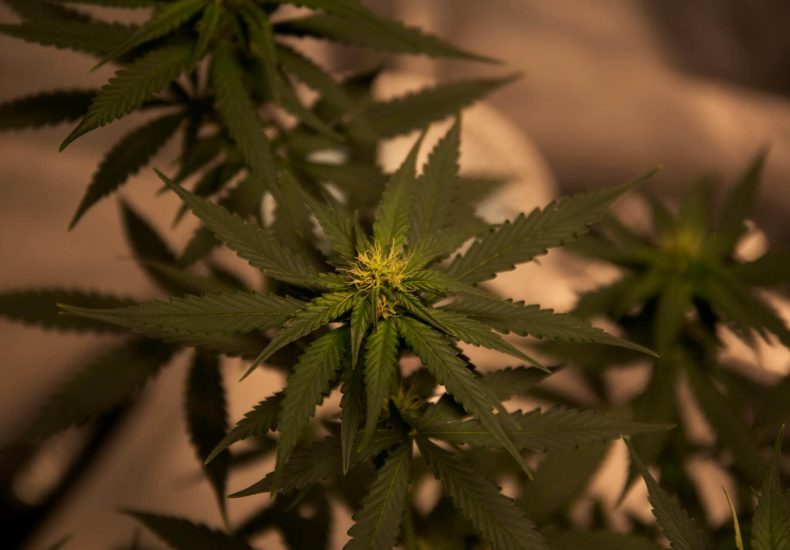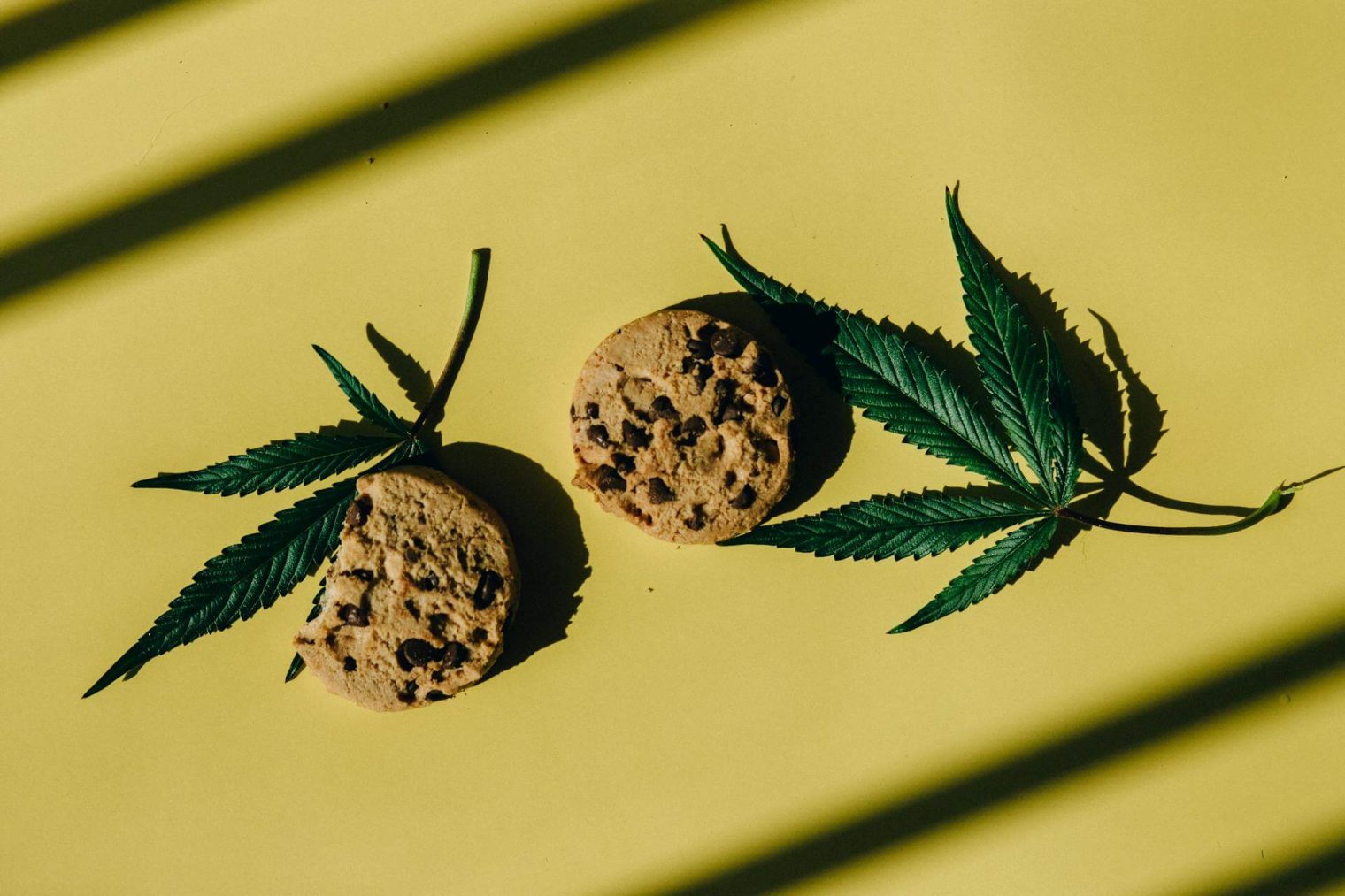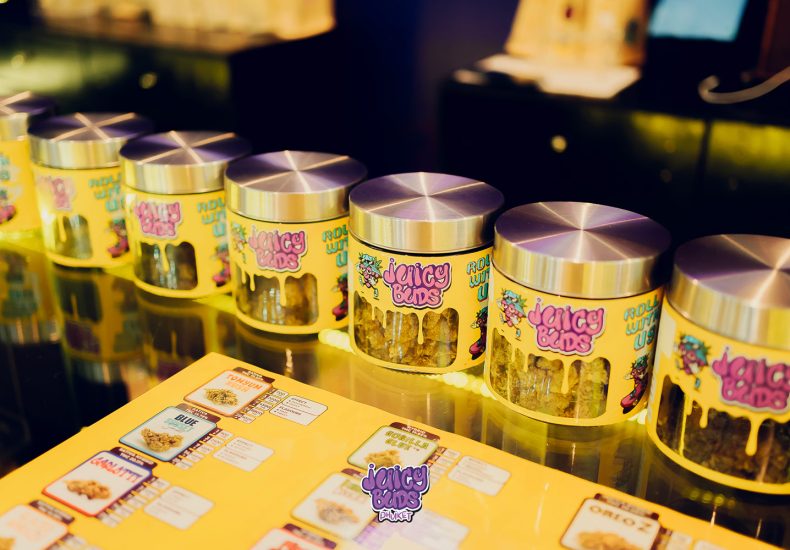 Cannabis
Cannabis
Table of Contents
Cooking with cannabis is becoming more popular, but it can be tricky to start. Maybe you want to try making treats that are not only tasty but also offer the relaxing benefits of marijuana.
Yet, you’re unsure about how to mix cannabis into your cooking without ruining a perfect meal or snack. Did you know that properly preparing cannabis before using it in any recipe is essential for activating its beneficial compounds?
This guide will show you how to use cannabis in your cooking adventures safely and effectively. From choosing the right strain to mastering infusion techniques like making cannabutter and cannaoil, we’ve got you covered.
Get ready for delicious edibles recipes, tips on potency calculation, and much more. Your cooking with cannabis journey toward flavorful and potent edibles starts here!

Preparing for Cooking with Cannabis
Understand the difference between THC and CBD to choose the right strain for cooking with cannabis. Gather the necessary equipment needed before starting the infusion process.
Understand THC vs CBD
THC (Tetrahydrocannabinol) and CBD (Cannabidiol) are both compounds found in cannabis, but they have different effects on the body. THC is what gives users a “high” feeling, while CBD does not cause this effect and is often used for its potential health benefits.
Knowing the difference between these two can help you choose the right strain for your cooking needs.
Using strains high in THC will result in edibles that have psychoactive effects, ideal for recreational purposes or managing certain health issues like pain or insomnia. On the other hand, CBD-dominant strains produce non-intoxicating edibles, better suited for those looking to enjoy the wellness aspects of cannabis without the high.
This distinction is crucial when creating recipes and techniques for cooking with cannabis that meet your desired results.
Choose a strain to cook with
When choosing a strain to cook with, consider the flavor profile and aroma of different cannabis strains. Opt for strains that complement the flavors in your recipes. Take into account whether you want a high or low THC content depending on your desired potency level.
Some popular strains for cooking include Blue Dream, OG Kush, and Granddaddy Purple due to their versatile flavor profiles and balanced effects when used in edibles.
Experiment with different strains to find the right one for your recipes – this will allow you to better tailor the sensory experience of your infused dishes. Keep in mind that each strain has its own unique terpene profile which contributes to its specific taste and smell, so be sure to choose a strain that aligns with your recipe’s overall flavors.
Gather necessary equipment
Before beginning the infusion process, ensure you have the necessary equipment. You’ll need an oven for decarboxylation and a double boiler to make cannabutter or cannaoil. Also, prepare a fine mesh strainer or cheesecloth for straining, as well as a glass jar for storage.
A digital scale is essential for accurate measuring of cannabis and ingredient quantities. Lastly, have sturdy heatproof containers ready to store your finished product safely.
Once you’ve gathered these tools, you’ll be equipped to embark on your cannabis cooking journey with confidence.
How to Infuse Cannabis into Recipes
Infusing cannabis into recipes involves a meticulous decarboxylation process, which activates the cannabinoids. It also entails making cannabutter and cannaoil to infuse various dishes with THC or CBD for an enhanced culinary experience.
Decarboxylation process
The decarboxylation process involves heating cannabis to activate its cannabinoids, making them ready for infusion. Start by preheating your oven to 240°F and breaking up the cannabis buds into small pieces.
Then, spread the cannabis on a baking sheet lined with parchment paper and place it in the oven for 30-40 minutes until lightly golden. This step is crucial as it converts THCA into THC, allowing for effective infusion when cooking with cannabis.
Once decarboxylated, the activated cannabis can be used to infuse oils or butter for use in edibles or other recipes. It’s an essential first step before incorporating cannabis into any cooking or baking venture.
Making cannabutter
To make cannabutter, finely grind your cannabis and then bake it in the oven to activate the THC. Melt butter on low heat and add the decarboxylated cannabis. Simmer gently for 2-3 hours, stirring occasionally.
Strain the mixture through a cheesecloth into a container and refrigerate until solid. The final product can be used as a versatile ingredient in various recipes from baked goods to savory dishes.
Making cannabutter involves grinding cannabis finely, activating THC by baking it, simmering with butter on low heat, straining through a cheesecloth, and refrigerating until solidifying.
Making cannaoil
To make cannaoil, start by decarboxylating your cannabis in an oven at 240°F for 40 minutes. Then, combine one cup of oil with the decarbed cannabis in a saucepan over low heat. Stir the mixture consistently for about three hours, being careful not to let it boil.
Finally, strain the mixture through a cheesecloth and store the infused oil in a cool, dark place until ready to use for cooking or baking recipes.
Once you have made your cannaoil, you can use it as a substitute for regular oil in various recipes such as brownies, cookies, salad dressings, and more. Remember to consider potency when using cannaoil in your recipes and adjust accordingly to ensure consistent dosage across dishes.
Tips for Cooking with Cannabis
Cooking with cannabis requires choosing the right strain, calculating potency, and mixing ingredients properly. For more detailed tips, read on.
Choosing the right strain
When selecting the right weed strain for cooking, it is crucial to consider the desired effects and flavors. Some popular strains for cooking include Blue Dream, Sour Diesel, and OG Kush.
Each strain has its own unique combination of cannabinoids and terpenes that contribute to different effects and flavors in your infused dishes. Matching the strain’s characteristics with your recipe can enhance the overall experience of consuming cannabis-infused food.
It is important to note that choosing a strain with a balanced THC:CBD ratio can provide both mild psychoactive effects and potential therapeutic benefits. Additionally, considering the aroma and flavor profile of the chosen strain will help ensure that it complements the other ingredients in your recipes.

Calculating potency
When calculating potency, it’s crucial to consider the THC content of the cannabis strain being used and its percentage in relation to the recipe. To calculate potency per serving, multiply the amount of flower or concentrate used by the THC percentage to find the total milligrams of THC.
Divide this number by the number of servings made with the infused ingredient. For example, if a recipe calls for 2 grams of cannabis with 20% THC and yields 10 servings, each serving would contain approximately 40 mg (2000 mg * 0.20 / 10) of THC.
Understanding and accurately calculating potency is essential for achieving desired effects without overconsumption.
Mixing ingredients properly
When mixing ingredients for cannabis-infused recipes, choose high-fat options such as butter or oil to ensure effective infusion. Incorporate finely ground cannabis into the mixture and heat it gently to activate the cannabinoids without burning them.
Stir the ingredients consistently throughout the process to distribute the cannabis evenly and achieve a potent infusion.
Calculating potency is crucial when infusing cannabis into recipes; measure accurately and adjust your usage according to desired effects. Always follow dosage guidelines and start with small portions, especially when cooking for beginners, to avoid overconsumption.
Recipes and Techniques for Cooking with Cannabis
Explore tantalizing recipes and techniques for infusing cannabis into your culinary creations, from delectable baked goods to invigorating beverages. Master the art of creating perfectly dosed edibles, deliciously incorporating THC and CBD to elevate your cooking experience.
Baking with cannabutter and cannaoil
Baking with cannabutter and cannaoil opens up a world of possibilities for creating delicious edibles. Using cannabutter or cannaoil allows you to infuse your favorite baked goods with the benefits of cannabis, offering a discreet and enjoyable way to consume it.
When baking with these infused ingredients, remember to start slow and experiment with different recipes to find the right balance of flavor and potency. From classic chocolate chip cookies to decadent brownies, there are countless options for incorporating cannabutter or cannaoil into your baking repertoire.
When using cannabutter or cannaoil in baking, be sure to follow dosage guidelines carefully, keeping in mind that the effects may take longer to kick in compared to other consumption methods.
Additionally, consider using mild-flavored strains when infusing butter or oil for baking, as this will ensure that the taste of cannabis complements rather than overwhelms your culinary creations.
Making infused drinks and hot chocolate
Create delicious cannabis-infused drinks and hot chocolate by adding a few drops of cannabis tincture or infused syrup. Simply stir the desired amount into your favorite beverages to enjoy a relaxing and flavorful experience.
Experiment with different flavors like mint, vanilla, or caramel for a unique twist.
For hot chocolate, add cannabis-infused milk or cream to your usual recipe for a cozy and soothing treat. Sprinkle some cocoa powder on top for an added touch of indulgence. Remember to start with a small dose and wait at least one hour before consuming more to gauge its effects.
Tea recipes for beginners
Start by steeping your favorite tea bag in hot water. Then, add a small amount of cannabis-infused butter or oil to the tea and stir until it’s fully dissolved. To enhance the flavor, consider adding honey, cinnamon, or other spices to taste.
Once everything is mixed together, sit back and enjoy your homemade marijuana-infused tea.
Moving on from “Tea recipes for beginners,” let’s explore some delicious dosage guides for edibles.
Dosage guide for edibles
Calculate the potency of your edibles by considering the THC content in your infusion. Start with a small dosage and wait at least two hours before taking more to gauge its effects.
When experimenting with homemade edibles, always begin with a lower dosage as the potency can vary from batch to batch. Ensure you label and store edibles properly, keeping them out of reach for children or pets.
Moving on to “Cannabis Tincture Recipes”…
Cooking with Cannabis
In summary, this ultimate guide has covered essential strategies for cooking with cannabis. You’ve learned about THC and CBD infusion methods, as well as practical tips and techniques for creating marijuana-infused recipes.
By infusing THC or CBD into your cooking, you can create delicious and wellness-focused dishes that offer a unique experience. The impact of these approaches is significant; they can elevate the culinary realm while offering potential therapeutic benefits.
For those interested in delving further into the field of cannabis cooking, we recommend exploring additional resources on weed recipes and infusion methods to unlock the secrets of this ever-evolving industry.


